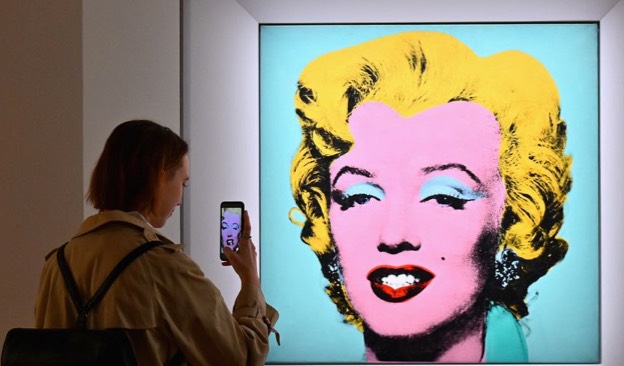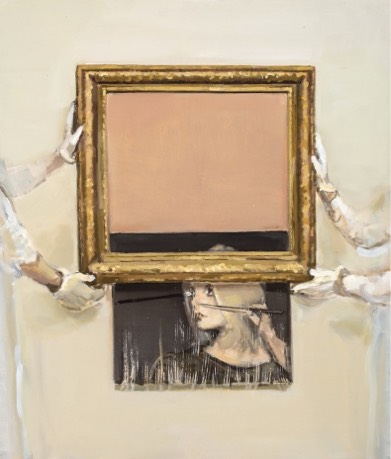
Who decides the value of an artwork?
The Mona Lisa is reported to be worth approximately $1 billion, but who decided on that price? Maybe you recently found a painting in your attic and want to know how much to sell it for? The world of art valuation is highly complicated and multifaceted. An artwork’s worth can be decided by several stakeholders, each with a slightly different approach. In this article, Artsper will explore the individuals who put a price tag on an artwork and some of the influential factors they might consider.
1. The artist
In the primary market, independent artists or galleries are the key determiners of an artwork’s value. If the artist is the vendor of their own work, they will derive its value based on how much time they spent on it, the materials they used and relative prices in the market. The contemporary success of the artist will, of course, have an impact on determining prices. Does the artist have a strong exhibition history? Have they won any awards? If so, the price of the artwork will reflect this. If an artist is an established name like Niki de Saint Phalle and Andy Warhol, high prices are a given. Warhol’s Shot Sage Blue Marilyn sold for approximately $195 million in May 2022. In particular, features such as a visible signature can add significant value, up to ten times the original worth.

2. Art experts
Art experts such as art historians, curators and art appraisers, play a crucial role in determining the value of a work of art, particularly in the secondary market. These experts consider a variety of factors when carrying out a valuation, including the condition of the piece, its recent results at auction and the opinions of other experts in the field. An art expert’s knowledge is often relied upon to provide objective values for insurance or estate purposes. According to Verified Market Research, the fine art insurance market was worth $461.25 million in 2020 and is estimated to reach $795.65 million by 2028. This makes the role of art experts crucial in helping determine the value and significance of a work of art.

3. Art collectors
Art collectors are equally important individuals who decide the value of an artwork. Their influence stems from their willingness to pay a premium for certain pieces. This can subsequently trigger a domino effect in the art market. Although they might not be trained in art history or appraisal, like art experts, when respected collectors buy a piece of art, they are expressing their belief in its value. Art collectors helped legitimize NFTs by paying record prices for these digital works and their continued investment consolidates the role of NFTs in the contemporary market. Art Basel’s 2023 report revealed that high-net-worth collectors spent more money on NFTs in the first half of 2022 than they did in the two previous years combined. When a collector invests in market trends, their vote of confidence can spread to other collectors and arts enthusiasts, subsequently elevating the value of the artwork and the artist.

4. Galleries
For emerging artists, galleries can prove decisive in determining the value of an artwork and ensuring the longevity of their artistic career. Galleries play a crucial role in promoting their artists, providing them with exposure and recognition that can increase the value of their works. The representation of an artist by a gallery is highly valued by collectors, who see it as a sign of endorsement, resulting in increased demand and higher prices. By joining an established gallery such as Perrotin, emerging artists can gain access to a wider network of collectors, institutions, and curators, amplifying their visibility and enhancing their reputation in the art world. This can be a pivotal factor in building their careers and increasing the value of their work over time. In short, galleries can make or break an artist!
5. Auction houses
The heavyweight decision makers in the secondary art market are auction houses. Sotheby’s, Christie’s, and Bonhams are some of the more famous auction houses which you may have heard of. Auction houses will work alongside their clients to agree on a value which is representative of the contemporary market. To come to a decision, they will consider the same factors as art experts and collectors. Is there a historical or contemporary significance to the artist or artwork? Has its authenticity been proven? How much did a similar work sell for?
Auction houses will also look at provenance, or the history of ownership of an artwork. If a piece has been passed down by notable owners, such as celebrities or prominent collectors, this can increase its value. In 2015, Picasso’s Young Girl with a Flower Basket sold at auction for $115 million. The elevated price was due to the fact that the painting had been owned by David and Peggy Rockefeller for over 60 years. Provenance provides a narrative for an artwork which can help increase its value.
When a piece is sold at auction, the final sale price will be according to the competition between bidders. This combative element can dramatically increase the value of an artwork. In 2022, Christie’s sold Ernie Eugene Barnes’s The Sugar Shack for $15.3 million, against a pre-sale estimate of between $150,000 to $200,000. This means the final sale price was 76 times higher than the estimate!

6. The art market
The art market itself has an overwhelming impact on the value of artworks. This encompasses all art sales from pieces sold at auctions to art fairs to private transactions. The market subscribes to principles of supply and demand. The more desirable a piece, the more people are willing to pay for it. This however, is only the case if the artwork is rare. If there is high demand for a piece but several prints are available, the market value decreases. That being said, the works of some artists are considered so valuable that they can still reach high prices despite the ubiquity of their work. This is the case for the sculptures of Alberto Giacometti and the animals of Claude and François-Xavier Lalanne, for example.
Market trends will help determine whether a piece is in demand or not. As digital art becomes increasingly popular, its value has increased. Christie’s sold an NFT of Beeple’s works for $69 million in 2021, representing a first-of-a-its-kind sale for its elevated price and the fact that the work was paid for with cryptocurrency.c

The art of valuation
Now that you know who decides an artworks value, you can appreciate art in a newly critical light. Whether you’re a seasoned collector or just starting to explore the art world, understanding the dynamics of art valuation can be an essential tool for navigating the art scene. The roles of art experts, appraisers and auction houses are critical but ultimately, it’s the art market that will have the greatest influence on the value of an artwork. And, if you’re on the lookout for a new piece, Artsper has something for everyone!

About Artsper
Founded in 2013, Artsper is an online marketplace for contemporary art. Partnering with 1,800 professional art galleries around the world, it makes discovering and acquiring art accessible to all.
Learn more













